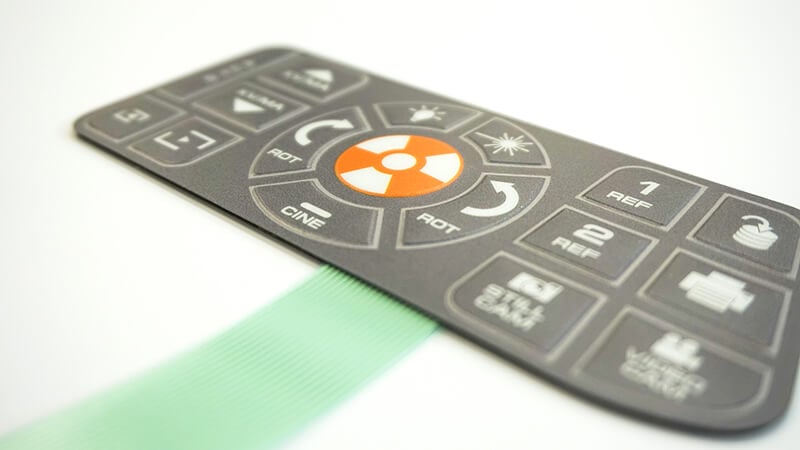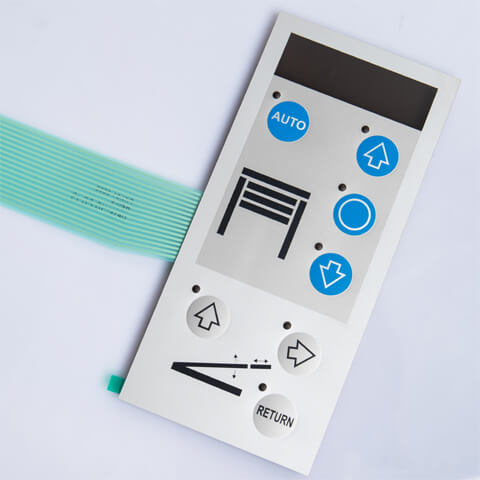Top Benefits of Integrating a Membrane Switch Into Your Electronic Equipment
Top Benefits of Integrating a Membrane Switch Into Your Electronic Equipment
Blog Article
Comprehending the Functionality of Membrane Layer Changes for Interface Devices
The functionality of membrane layer switches represents a substantial development in customer interface design, integrating performance with aesthetic versatility. As markets increasingly focus on user experience, recognizing the nuances of membrane button technology comes to be vital.
What Are Membrane Buttons?
Membrane layer switches are ingenious interface tools that help with individual communication with electronic equipment. These flexible elements consist of numerous layers, consisting of a visuals overlay, spacer, and a printed circuit layer. The layout permits a smooth integration right into various digital tools, enhancing both the aesthetic and useful facets of customer interfaces.
Membrane layer buttons are generally used in a vast array of applications, from house devices to commercial machinery and medical devices. Their construction generally features a thin account, making them an excellent selection for small styles. The tactile feedback provided by these buttons can be crafted to satisfy specific customer preferences, making sure efficient communication in between the individual and the device.
Resilience is another substantial benefit of membrane buttons, as they are immune to dirt, wetness, and chemicals, which enhances their life-span popular atmospheres. Additionally, these buttons can be customized in regards to shape, size, and visuals design, permitting for branding and user-specific functions. Overall, membrane layer switches stand for a useful solution for improving user experience in digital devices, integrating functionality with visual appeal in a reliable manner.
Just How Membrane Changes Work
Operating on an uncomplicated principle, membrane layer switches use a split building to sign up user input successfully. Each switch contains multiple layers, consisting of a printed circuit layer, a spacer layer, and a top visuals layer, which are developed to function together flawlessly. When an individual presses the leading layer, it compresses the spacer layer, bringing the conductive aspects of the circuit layer into contact with each various other.
This call creates a shut circuit, signaling the gadget to implement a certain feature. The style enables various configurations, consisting of tactile comments, which can boost the individual experience by providing a physical feeling upon activation. The materials used in membrane switches often include versatile substratums, such as polyester or polycarbonate, which make certain sturdiness and durability versus damage.

Key Benefits of Membrane Layer Buttons

Another significant benefit is their compactness. Membrane buttons are slim and lightweight, which enables suppliers to save room in their gadgets without sacrificing capability. This feature is specifically helpful in applications where weight and volume are essential considerations.
Additionally, membrane layer buttons are resistant to dirt, wetness, and chemicals, boosting their longevity. This durability expands their lifespan and lowers the her explanation need for constant replacements, leading to price savings gradually.
Furthermore, the responsive responses offered by membrane layer switches can be enhanced to boost user communication. They can consist of functions such as increased buttons or distinct clicks, improving functionality and user experience.
Applications Throughout Industries
Interface devices making use of membrane switches are prevalent in a vast variety of sectors, showcasing their flexibility and capability. Membrane Switch. In the medical sector, membrane layer buttons are important to tools such as analysis equipment and patient monitoring systems, where their longevity and ease of cleansing are essential for preserving health requirements. In the vehicle sector, these buttons are utilized in dashboard controls and infotainment systems, giving a smooth and contemporary interface for individuals.
Additionally, the consumer electronics industry benefits from membrane switches in devices and portable tools, where portable style and easy to use user interfaces improve user experience. Industrial applications also leverage membrane layer switches over for control board in machinery and automation systems, emphasizing their robustness and resistance to harsh environments.
In the aerospace and protection markets, membrane switches are her latest blog made use of in cabin controls and devices, where reliability and performance under severe problems are critical. Additionally, the gaming sector significantly integrates membrane switches in controllers and arcade equipments, adding to an interesting customer experience. Generally, the adaptability of membrane changes enables their prevalent use across countless markets, highlighting their significance in modern-day user interface style.
Future Patterns in Membrane Switch Technology

In addition, using advanced materials, such as polycarbonate and polyester movies, is anticipated to climb, providing improved durability and resistance to environmental stressors. These products add to the total long life of membrane switches, making them suitable for harsher industrial applications.
In addition, the unification of clever modern technology, consisting of IoT connection, will certainly enable membrane switches to interact with various other tools and systems, facilitating a more interactive user experience. This pattern straightens with the expanding need for wise gadgets across different markets, from health care to consumer electronics.
Lastly, personalization choices are expected to broaden, enabling producers to produce bespoke services tailored to specific customer demands and choices. These growths will position membrane switches as essential parts in the advancement of interface modern technology.
Final Thought
To conclude, membrane switches stand for an essential improvement in individual interface technology, supplying a dependable and versatile remedy for varied electronic applications. Their split building and construction assists in small layout, while attributes such as responsive responses boost individual interaction. The resilience versus environmental elements further strengthens their utility throughout several industries. As innovations in material scientific research and touch noticing technologies proceed, the functionality and applicability of membrane layer switches are expected to broaden, reinforcing their value in contemporary digital devices.
Report this page